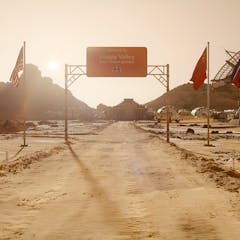
Articles on NASA
Displaying 21 - 40 of 468 articles

Two scholars who study death rituals explain that the corpse is considered spiritually polluting in many religious traditions, while the Moon holds a sacred place.

Spaceplanes seemed out of favour when the shuttle was retired in 2011; they now seem to be making a comeback.

Projects under NASA’s CLPS program – including the Odysseus lander that made it to the lunar surface – will probe unexplored questions about the universe’s formation.

As space travel and lunar exploration becomes a near-future reality, we should consider the impact of human activities on the lunar environment.

Among the missions being planned is a huge helicopter drone to explore Saturn’s moon Titan.

The US might be facing international competition to be first to return to the Moon.

Japan is one of several countries that weren’t part of the space race of the 1950s and 1960s looking toward the Moon. They’ve now become the 5th country to have landed on its surface.

Sarah Nance uses geologic data and a variety of artistic media to help people think about their place in the landscapes they use and occupy.

Japan’s space agency is landing its first lunar probe this week. This makes the Moon an increasingly busy target for spacefaring nations – with conflicting political stances among them.

In sci-fi depictions, extraterrestrial habitats have evolved tandem with scientific understanding of conditions on planets

NASA announced that the next two Artemis missions — Artemis II and III — will be delayed for safety reasons. However, Artemis IV remains on schedule.

The nature of dark energy remains one of the biggest puzzles in cosmology.

The Peregrine and Nova-C landers are due to carry out valuable science at two diverse lunar locations.

The sun is expected to reach its solar maximum in 2025. Recent auroras suggest that the maximum may be bigger than predicted.

Expect lots of space missions to launch this coming year, with exciting new science to follow.

Chandrayaan-3’s successful landing on the Moon made 2023 a big year for lunar exploration, and future years will come with even more discoveries.

Five of the Uranus moons might be ocean worlds − and if there’s water, there might be life.

Borman’s professionalism helped the risky Apollo 8 mission become a success.

Some dark craters on the Moon are never exposed to light − ice could be hiding in these permanently shadowed regions, and India’s Chandrayaan-3 mission marked a big step toward finding it.

In September 2023, a NASA mission successfully brought samples of an asteroid down to Earth in a sealed capsule. Analysis of these samples may reveal information about the origins of the universe.
